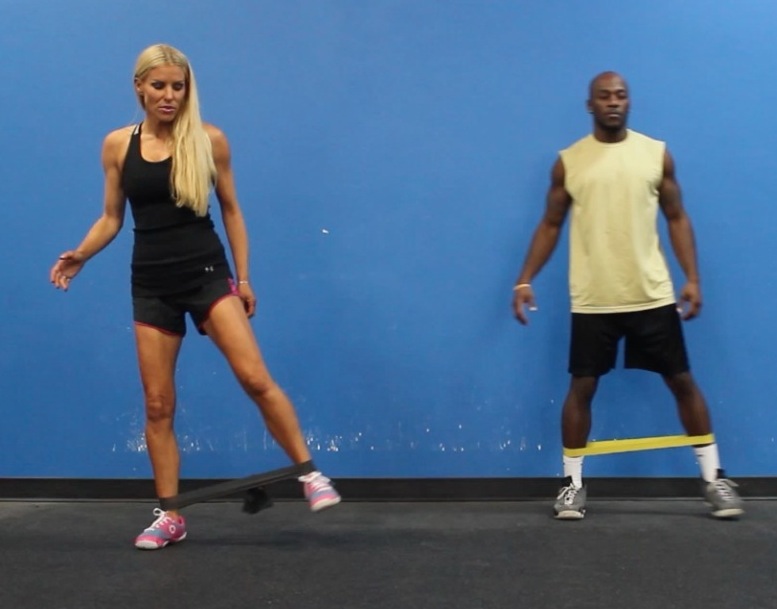If you work in a hospital, the odds are that you already burn tons of calories a day during your rounds. You might also be working hard moving patients and carrying supplies. However, if you aren’t in decent shape, it might be difficult to keep up. And without a strong, flexible and capable body, you’ll increase your odds of getting injured on the job. Fortunately, there are steps you can take to get in shape and protect yourself. Here are 10 great exercises and workouts for nurses.
Planking
Planking is an excellent exercise for strengthening your core muscles. It will also strengthen your hamstrings and glutes. This will improve your posture, your balance and your overall fitness level. This means you’ll be better able to keep up with the physical demands of your job. In addition, it will also improve your core endurance, which will help you stay up for longer hours.
The first step in planking is to put yourself in a pushup position. Lower yourself on your forearms. Have your forearms and fists flat on the ground. Keep your back straight. Then engage your core muscles to hold the position, holding it for several seconds.
Seated Butt Clenches
Yes, this is an exercise. It is also a simple one you can do while sitting. Simply pull in your glutes and Kegel muscles, hold the position for five seconds, and release. This move will strengthen your buttocks and your core muscles.
Squats
Squats will strengthen your glutes and quads. It can improve your flexibility, too. Squats will protect you from hip and knee injuries while you’re lifting patients.
To perform a squat, first assume a standing position with your feet further apart than your shoulders. Keep your toes pointing forwards. Lower your body to a squat position. Keep your back straight as you do this. Then slowly rise to a standing position.
Lunges
Lunges are a type of unilateral exercise. This exercise trains each side of your body separately. This can improve your balance, coordination and stability. In order to do a lunge, start with your feet under your hips. Take one giant step forward while your other leg and knee are facing the floor. Tighten your abs as you shift from standing to lunging position. Then return slowly to a standing position. Then repeat the process with the other leg.
Calf Raises
The simplest form of this exercise is to stand up straight, hold onto something like a chair for balance, and stand up on your toes as high as you can. Hold it for several seconds, and then lower your heels to the floor.
Standing Hamstring Curls
One of the benefits of hamstring curls is that you can do them while standing, seated or lying down. This makes them one of the few moves on our list you could do at your desk.
To do standing hamstring curls, stand with your feet apart and a resistance band around your ankles. Lift your leg toward your buttocks. Hold it as close to your buttocks as possible. Tighten your muscles. Lower the leg until you’re standing. Then repeat with the other leg.
Shoulder Shrugs
Shoulder shrugs are a good way to tone and strengthen your traps, which will help you when you need to perform a lift. They can also be a good way to release tension in your back, especially at the end of your shift. How do you perform shoulder shrugs? Stand with your hands at your sides. Lift your shoulders as high as you can. Hold them at the peak for several seconds. Then slowly release the tension and lower your shoulders. Don’t bend your elbows at any point. Add intensity by holding on to dumbbells or big bags of saline!
Dips
Use a sturdy bench to enhance your triceps strength! Sit on the edge of a bench with your hands on the bench, fingers pointed towards your knees. With heels on the floor and your knees bent, lower your tush towards the ground until your elbow are bent to 90 degrees (if you can), lift yourself back up with straight arms and repeat.
Hospital Cardio
Nurses often go, go, go! Cardiovascular fitness is a must-do to keep up with your life and your job. Move briskly through the hospital hallways and staircases on breaks to give your heart and lungs a boost.
Deep Breathing
Deep breathing isn’t a workout per se, but it is an exercise that can reduce your stress and help you remain relaxed. It can decrease tension, too. Take some time to stretch and breath whenever you can while at work.
When you’re researching FNP vs NP, know than an FNP is mainly a nurse practitioner who specializes in the treatment, education, follow up and examinations across all ages and genders, while a conventional NP will work in a particular area of medicine or with a specific group. Working as an FNP has much less of an emotional toll too, so if you feel your years working bedside might be coming to an end, making the transition could extend your career for a few years, or even decades.
Nurses cannot care for patients or themselves if they are not in good shape. Use these simple exercises to remain an efficient, capable member of the team.






